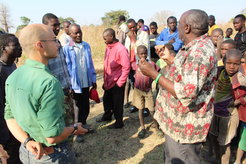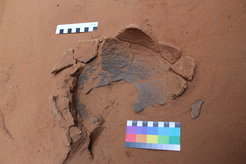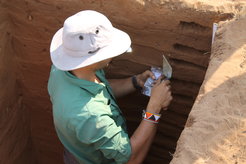Archaeology of the Movement of People, Plants, and Animals in Holocene Southeastern Africa

Situated between the eastern African Great Rift system and southern Africa, Zambia was a crucial region for the spread of domesticated plants and animals, iron technology, and Bantu speaking populations in the Later Holocene (c. 3000-500 BP). Previous research suggests that a series of migrations brought diverse herders and farmers into Zambia, where they entered into long-term social and economic relationships with each other, and with local hunter-gatherers. Despite encompassing several critical corridors connecting eastern and southern Africa, Zambia remains surprisingly under-studied. As result, many questions regarding the spread of food production and the linguistic and genetic legacies of recent population movements remain unanswered.

This research project is the first dedicated archaeological investigation of this crucial region in three decades. By combining high precision archaeological excavation methods with rigorous with a suite of new laboratory methods, this project will add unprecedented resolution on one of the most transformative periods in African history. Geochemistry, isotopic analyses, paleobotany, ceramic residue studies, zooarchaeology by Mass Spectrometry, proteomics, and especially high-resolution radiocarbon dating of samples from these new excavations is reshaping models for the spread of food production. Renewed archaeology in Zambia is also providing new opportunities for collaboration with Zambian institutions, building training opportunities for Zambian scholars and working local communities to protect cultural heritage resources.

As a multi-sited research project, excavations cover several intriguing sites. Work at a cluster of sites in the Salumano region of southwestern is particularly intriguing, as it has yielded some of the earliest evidence for ceramic technology and possibly domesticated animals in this part of Africa. New excavations were also undertaken at Chundu Farm, the only site to yield Early Iron Age burials in Zambia, and the famous village site of Kalundu Mound that has one of the longest sequences of agricultural land-use in southern Zambia. Analysis of materials of these materials coupled with collaborations with geneticists and linguistics from the Max Planck Institute is adding new insights into population history, contributing to some of the most vibrant discourses on the African past.


